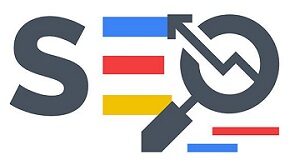For marketers, SEO, or natural referencing, is a key technique for attracting traffic to a website and capturing leads in the sales funnel. SEO, and especially technical SEO, can be lucrative when it increases leads, conversions, and sales. However, it remains a complex art. Most marketers have basic SEO skills, which allow them to improve a website’s search engine rankings and site visibility in order to attract traffic, and increase conversions and sales . .
Find out how to perform a technical SEO audit with this free guide.
Some SEO principles are well known: keywords, quality of content or user experience, for example. However, the issues are more complex and require the acquisition of in-depth skills.
This article covers some little-known technical aspects of SEO in plain language. Mastering technical SEO is a source of major strategic and competitive advantages. It’s about understanding how SEO works, in particular to facilitate communication between marketing teams and SEO experts, whether internal or external. Smoother communication saves considerable time and efficiency.
What is Technical SEO?
Technical SEO is “the invisible part of the iceberg”. It consists of working on aspects such as rules of analysis, research and algorithms. In short, it is based on good practices that allow the site to be seen and indexed by Google and other search engines even before entering into a positioning logic.
How to carry out a technical SEO audit?
To fully understand technical SEO, it is essential to start with the basics, in other words with the search engines themselves. How does a search engine work ? How and why are web pages referenced? Here is an overview of the key elements of technical SEO.
The algorithm
The algorithm is the basic recipe for SEO. It consists of a mathematical formula designed to identify the most relevant or useful website in relation to a user’s query. In essence, it is a rating system.
The algorithm measures different criteria in a certain order, in order to position a given page in the search results. That of Google takes into account about 30% of criteria relating to on-page technical SEO, against 70% of other factors related to links or signals on social networks. Some of these criteria are known, for example title tags which are of paramount importance, while others remain difficult to identify.
The exact functioning of the algorithms of Google and other search engines is not known, as this information is kept confidential. Some key SEO factors are nevertheless established. These are addressed next.
Search engines penalize websites that openly use tactics to manipulate SEO algorithms. A penalty can reduce website traffic by 50-80%.
Penalties can be algorithmic or manual. Algorithmic penalties, which correspond to an automated process, detect certain violations and block the sites concerned accordingly.
Manual penalties are applied after human intervention. When an algorithm fails to automatically determine whether a penalty is justified or not, an observer decides on its applicability and, if so, its severity.
The higher the authority of a website, the better its ranking by search engines. To date, for Google, the only reliable authority marker is PageRank, which evaluates the comparative importance of a web page and assigns it a score from zero to ten (ten indicating the strongest authority).
Other authority signals are based on results, for example: site traffic, awareness of brands or pages linked to yours, and number of brand mentions across the web. These authority indicators are difficult to assess, but extremely important.
Web architecture
Web architecture is one of the foundations of technical SEO. It involves optimizing the way pages are organized and prioritized. Web architecture has direct consequences on navigation, user experience and therefore on SEO itself.
To be relevant, the architecture of a website must be constituted in a tree structure, and illustrated in a site plan in an XML file . To help you visualize it, do not hesitate to represent a diagram in the form of a tree. At the very top, place the homepage. Then, add the secondary pages. The lower a page is in the schema, the deeper it is in the website.
To combine web architecture and a good SEO score, the first step is to target the relevant keywords for your website, based on user queries. These keywords should be placed as high as possible in your website architecture. Secondly, identify long queries (containing several words), and associate them with the categories of your website.
To facilitate navigation and improve the user experience, it may be particularly interesting to add a breadcrumb trail to your website.
Website security
In 2014, Google announced that the level of security of websites became a major criterion of its algorithm. It seems today that the HTTPS protocol has become a reference value, both to increase your chances of seeing your site position itself in search engine results and to reassure Internet users who visit your website.
The impact of HTTPS on SEO is indeed real, even if it remains indirect. Secure sites are more numerous in the top results than sites that have kept the HTTP protocol, of course. But this is also due to the fact that the owners of these sites have undertaken numerous optimization actions with more immediate results. In any case, HTTPS is likely to become a major SEO standard in the coming years, accompanied by the SSL certificate or the TLS protocol to further protect websites.





